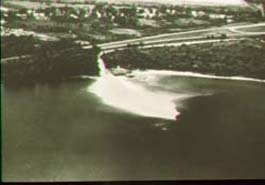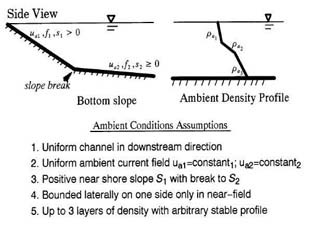Wastewater discharges of brines are associated with oil and gas drilling and production and desalination facility discharge.
In the oil and gas industry they are commonly referred to as "produced waters".
Because these flows tend to have greater density than the surrounding ambient waters, they are negatively buoyant and will sink towards the bottom.
After bottom boundary interaction (or stratified terminal layer formation)
density current mixing is likely to occur.
Density current flows can extend for large distances in the far-field before transition to passive ambient diffusion.
Mixing Zone Analysis of Brine Wastewaters with CORMIX
Care should be exercised when simulating these flows within CORMIX.
Although the system does recognize negatively buoyant flow classes (NV, NH, MNU) the system assumes a
flat bottom topography.
In the far-field as density currents,
these flows will have a strong tendency to travel downslope, following local bathymetric contours.
CORMIX - GTS does allow for specification of bottom slope and three-layer ambient density profiles for a more detailed analysis of density current behavior on sloping bottom topography.



